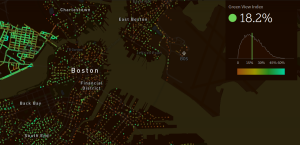//Tanvi Harkare
//Section B
//tharkare@andrew.cmu.edu
//Project-01-Face
function setup() {
createCanvas(500,600);
background(0, 180, 180);
}
function draw() {
scale(0.8);
//hair
fill(0);
rect(160, 120, 280, 500, 150);
//ears
fill(215, 159, 102);
ellipse(185, 310, 40, 70);
ellipse(415, 310, 40, 70);
fill(215, 151, 85)
ellipse(185, 310, 20, 48);
ellipse(415, 310, 20, 48);
//head
fill(215, 159, 102);
ellipse(300, 300, 220, 300);
//hair part 2
fill(0);
ellipse(325, 180, 150, 75);
ellipse(250, 185, 90, 65);
strokeWeight(15);
stroke(0);
line(380, 190, 414, 270);
line(210, 190, 185, 270);
//earrings
noStroke();
fill(255);
ellipse(187, 339, 6, 6);
ellipse(413, 339, 6, 6);
//eyebrows
fill(0);
beginShape();
vertex(325, 250);
vertex(370, 240);
vertex(385, 255);
vertex(370, 250);
vertex(325, 260)
endShape();
beginShape()
vertex(275, 250);
vertex(225, 240);
vertex(210, 255);
vertex(225, 250);
vertex(275, 260);
endShape();
//glasses
var x1 = 345;
var x2 = 255;
var y = 275;
rectMode(RADIUS);
noFill();
stroke(0, 0, 139);
strokeWeight(5);
rect(x1, y, 35, 25, 5);
rect(x2, y, 35, 25, 5);
line(290, 275, 310, 275);
rectMode(CORNER);
noStroke();
//eyes
fill(255);
ellipse(x1, y, 40, 22);
ellipse(x2, y, 40, 22);
fill(65, 43, 21);
ellipse(x1, y, 20, 20);
ellipse(x2, y, 20, 20);
fill(0);
ellipse(x1, y, 10, 10);
ellipse(x2, y, 10, 10);
fill(255);
ellipse(x1 + 2, y - 2, 3, 3);
ellipse(x2 + 2, y - 2, 3, 3);
//mouth
fill(255);
strokeWeight(4);
stroke(227, 93, 106);
arc(300, 380, 80, 50, 0, PI, CHORD);
//nose
noFill();
stroke(65, 43, 21);
strokeWeight(2);
ellipse(300, 340, 25, 20);
fill(215, 159, 102);
noStroke();
rect(280, 320, 40, 20);
}For the self portrait, I wanted to create a portrait that was made from simple shapes. My process started by taking a photo of myself and simplifying geometries into simple shapes, especially ellipses and rectangles. I also used the photo to help determine where shapes should be placed on the face. The only shapes that were created using a series of points are the eyebrows. For the final touch, I added glasses that I sometimes wear and a set of earrings.
![[OLD FALL 2018] 15-104 • Introduction to Computing for Creative Practice](https://courses.ideate.cmu.edu/15-104/f2018/wp-content/uploads/2020/08/stop-banner.png)

